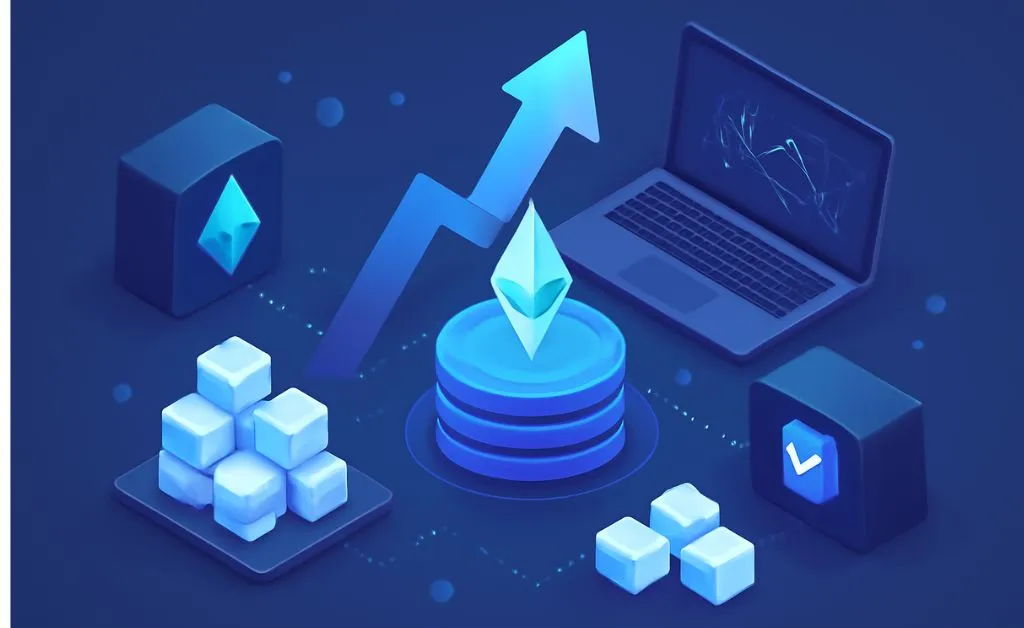
How Optimistic Rollup Works in Ethereum
Introduction to Optimistic Rollup
With Ethereum facing network congestion and high transaction fees, Optimistic Rollup has emerged as a Layer 2 scaling solution that helps speed up transaction times and reduce costs. This technology allows Ethereum to scale while maintaining the security of the network. In this article, we will dive into how Optimistic Rollup works, its advantages, limitations, and notable projects implementing it.
1. How Does Optimistic Rollup Work?
Optimistic Rollup is an Ethereum scaling solution that reduces the load on the main network by processing transactions off-chain and only sending necessary data to Ethereum. Here are the basic steps in how Optimistic Rollup works:
Off-chain Transaction Processing:
Transactions in Optimistic Rollup are not executed directly on the Ethereum network but processed off-chain. Only the necessary data is compressed and sent to the main chain as calldata or blobs. This reduces Ethereum’s load and enhances network performance.
Optimistic Assumption:
The Ethereum network assumes all transactions are valid unless fraud (fraud proof) is proven. This assumption reduces computation costs and speeds up transaction processing, minimizing network congestion.
Dispute Mechanism (Challenge Period):
After a batch of transactions is sent to Ethereum, there is a dispute window (usually 7 days), during which anyone can submit fraud proofs if a transaction is invalid. If no dispute arises, the transaction is considered valid and accepted.
2. Key Components of Optimistic Rollup
The main components of an Optimistic Rollup system include:
Sequencer:
The sequencer is responsible for collecting, processing, and ordering transactions before submitting them to the Ethereum main chain.
Smart Contracts on Ethereum:
Smart contracts on Ethereum manage the state and store the data of the rollup, ensuring security and availability of the data.
State Root:
This is the hash value of the current state of the Optimistic Rollup, which is submitted to Ethereum to verify the validity of transactions.
3. Advantages and Limitations of Optimistic Rollup
-Advantages of Optimistic Rollup:
Reduced Transaction Fees and Increased Speed:
By processing transactions off-chain, Optimistic Rollup helps reduce the load on the main Ethereum network, lowering fees and speeding up transaction processing.
Ethereum Compatibility:
Optimistic Rollup is fully compatible with the Ethereum Virtual Machine (EVM), making it easy to integrate with existing applications on Ethereum.
Maintaining Security and Decentralization:
Optimistic Rollup leverages the security of the main Ethereum network, ensuring that transactions remain secure while maintaining a high level of decentralization.
-Limitations of Optimistic Rollup:
Slow Withdrawal Times:
One of the major drawbacks of Optimistic Rollup is the withdrawal time from Layer 2 to Layer 1, which can take longer due to the dispute mechanism. This may cause delays for users withdrawing funds.
Dependency on Sequencers:
Optimistic Rollup could face centralization risks if the sequencers are not sufficiently decentralized, as they play a crucial role in collecting and processing transactions.
4. Projects Implementing Optimistic Rollup
Optimism:
Optimism is a project implementing Optimistic Rollup on Ethereum to reduce transaction fees and enhance network scalability. Optimism aims to provide a smoother Ethereum experience with lower costs and faster speeds.
Arbitrum:
Arbitrum is also an Ethereum scaling solution that uses Optimistic Rollup. It offers a multi-round dispute mechanism to handle disputes more efficiently, improving scalability and reducing transaction fees.
Conclusion
Optimistic Rollup is a powerful scaling solution for Ethereum that helps reduce transaction fees and improve network scalability while maintaining the security and decentralization of Ethereum. Projects like Optimism and Arbitrum are implementing this technology, providing significant benefits to users and decentralized applications.
If you want to learn more about Ethereum scaling solutions, stay tuned to our in-depth articles so you don’t miss any important information!